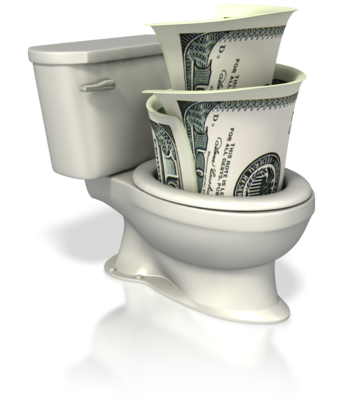Family History at Home – Find it, identify it, share it!
Family history can, and should be found around our own homes. Your house is a great place to look for clues as well as the ideal place to display what you’ve already found! In this free genealogy live webinar Lisa Louise Cooke will show you how.
Elevenses with Lisa Episode 65
In Elevenses with Lisa episode 65 Lisa Louise Cooke will:
- explore our homes for family history
- see if we can’t unlock some mysteries, and
- look at some fun and creative ways to incorporate family history into our homes!
Episode 65 Show Notes
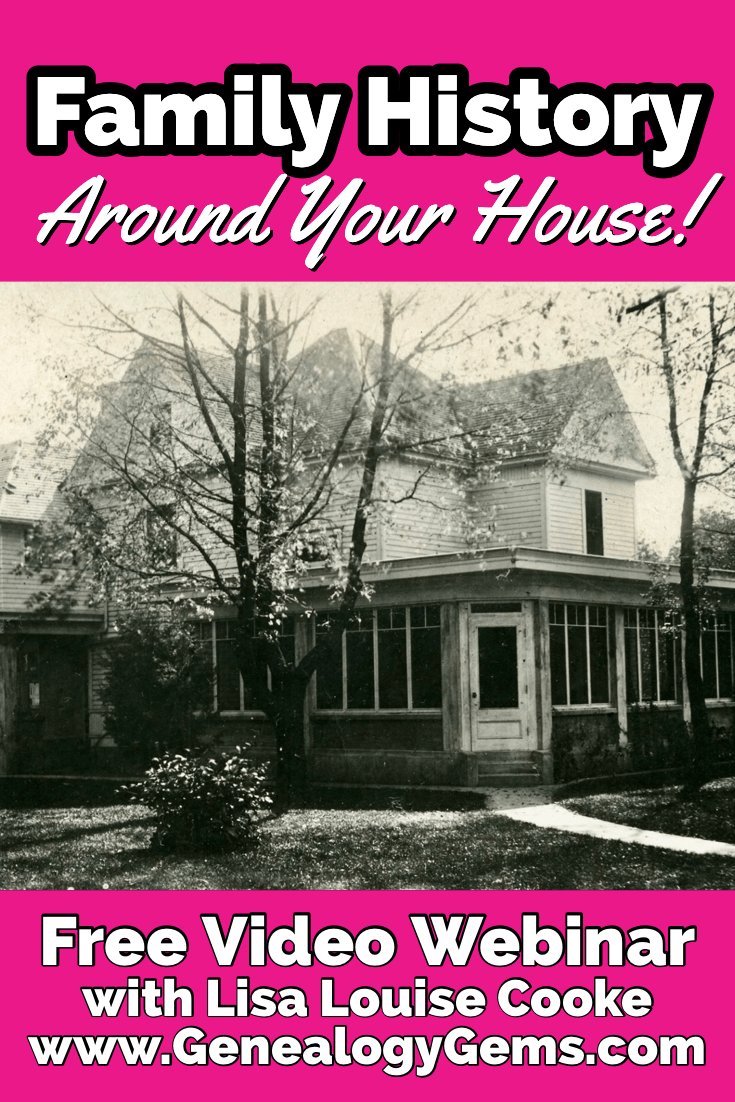
Watch episode 65
Home is where the heart is and it’s certainly where the family history is. If you’ve found an interesting piece of family history around your home tell us about in the Comments section below so we can all get more ideas of what to look for.
What To Do with the Family China Nobody Wants
Author Robbie Shell wrote an article for the Wall Street Journal called The Family Heirlooms That Our Children Don’t Want Lifelong possessions look very different when we start trying to pass them on.
She wrote about being retired and becoming a grandmother. “The new baby (my first grandchild) and new house ignited one of my long-awaited projects—excavating crawl spaces and basement corners on a hunt for possessions to pass on to the next two generations. It’s easy to predict how this played out. My son and his wife turned down many more items than they accepted. Much of what I had hoped to “upsize” to them stayed in my basement and attic. What wasn’t easy to predict, however, was how complicated this seemingly simple transaction could be. It involved multiple perspectives, across multiple generations. It showed how possessions, when held up to the light, often lose the very qualities that prompted us to set them aside. And, in my case, it offered a glimpse of a future that I’ve thought about—and looked forward to—for years.”
She proceeds to describe how she went through items in the house, offering them up to her son and daughter-in-law. She got replies like:
- Too ornate
- No Shelf space now, maybe later,
“They did give thumbs-up to desk lamps, guest sheets and towels, a few kitchen items and one folding chair, among other things—utilitarian items with no stories or expectations attached.”
It’s an interesting dilemma I hadn’t thought about when I was carefully collecting and saving things over the past few decades: that being attached to the story behind the item was key to valuing it. We’re attached. They aren’t.
Then of course if enough years and even generations go by, we develop an interest in family history and can’t believe our good fortune to unearth such a treasure.
“Then there was the collection of unrelated items I now saw in a different light—those whose stories matter only to me: the child’s battered wooden rocking chair from the porch of my grandparents’ summer house; a faded, inscribed photograph of my father as a young man standing next to his own father, whom I never met; and the small tarnished music box with a twirling ballerina on top that was a gift from my godfather when I was young enough to still dream about being a dancer.
These things will stay with me here in the home where I have lived for decades.
Unless…
One day a young girl visiting her grandparents comes upon the music box. She picks it up and turns the key that starts the music playing. “Grandma,” she says, “what’s this? Can I have it?” “It’s yours,” I say, my heart skipping a beat. “It always has been. You had only to ask.”
I’ve inherited a lot of sets of dishes, and I have three grown daughters, and so far there aren’t any takers. My friend Kim recently proposed the idea of taking a class to learn how to make mosaic stepping stones for the garden. I can’t think of a better way to downsize some of this china!
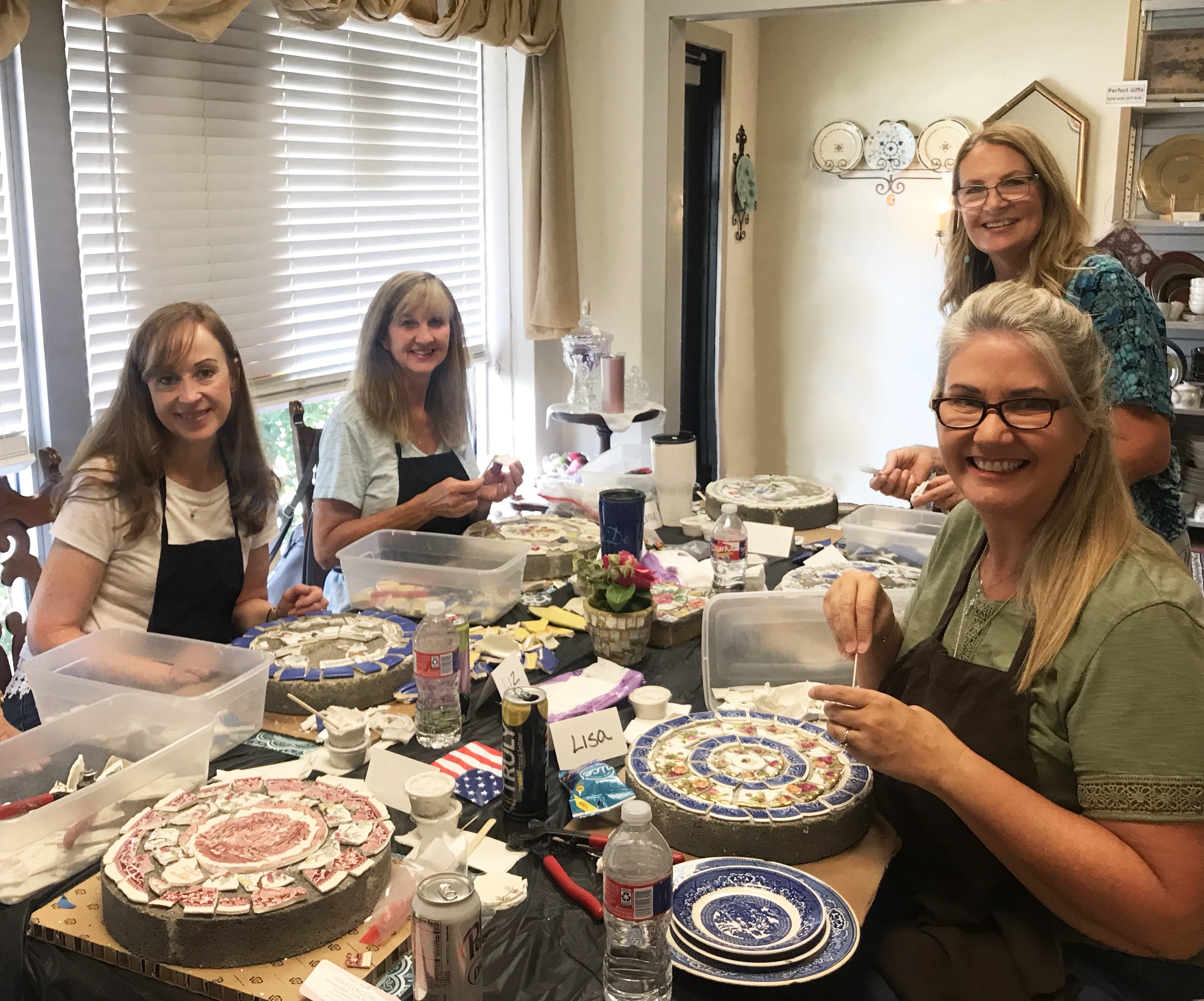
making mosaic tile stepping stones with my besties
So during last week’s live show (and you’ll find the link to the video replay here on YouTube in the video description below or go to genealogygems.com and click Elevenses in the menu to go to episode 64) I asked if any of you have family china:
- Ann Baker: Inherited? No, but we have some wedding china from our wedding 52 years ago that our kids absolutely don’t want. I’m putting it in the will that they must keep them. Or I’ll haunt them.
- Barbara Dawes: Wedding gift from my grandmother was my set of sterling silver – do I take it with me?
- Anne Renwick: And yes, I have LOADS of old china!
- Karen de Bruyne: had to give lots of grandparents old china away earlier this year, I kept one cup and saucer
- Louise Booth: 3 or 4 sets — I’ve lost track!

mosaic tile stepping stone
China Plate Mosaic Stepping Stone Supply List (the links below are affiliate links. We will be compensated if you make a purchase. Thank you for using them and supporting this free show):
- Concrete stepping stone from the local garden or hardware store
- At least 2-3 large dinner plates or several smaller sizes. Strive for flatter plates.
- Masonry cutters – ABN Glass & Ceramic Tile Nippers, Premium Carbide Cutting Wheels and Comfort Grip Handle
- Gryphon Gryphette Glass Grinder (optional)
- Thin set
- Tile Grout
- Grout Sealer (about 1/3 cup applied to the grout with a small paintbrush.)
- 2-3 popsicle sticks
- Small cheap paint brush
- Toothpick
- Paper towels
- Plastic gloves
China Plate Mosaic Stepping Stone Instructions:
- Cut the plates up into piece 1-2” in size. Toss the pieces that aren’t fairly flat (like the raised rim that the plate sits on.)
- Arrange them as desired on the concrete stepping stone. Place them as close as possible while leaving room for the grout. You don’t want large grout lines that might crack later.
- Using the popsicle stick, apply a coat of mastic to the back of each piece. Cover the entire back evenly and press the piece back in place.
- Clean up the grout lines so that no mastic sits higher than the plate pieces or clogs the grout line spaces.
- Let drive 24 hours.
- Mix the grout – use water sparingly and leave extra grout in case it gets too wet.
- Let the grout stand or slake for 5 minutes.
- Wearing the gloves and using a popsicle stick, fill all the grout lines completely and smoothly.
- Follow package directions for set-up time and then buff it clean.
- Allow to dry 24 hours.
- With a small paintbrush apply the sealer to the grout lines and let dry.
Grandma’s Kitchen Utensils Wall Display
Do you remember spending time in your grandmother’s kitchen? I sure do. My maternal Grandma would take us out to the fields to pick fruits and vegetables and she canned a lot of it to preserve it for winter, keeping it in an old wooden pie safe in her garage.
I inherited many of her trusty kitchen utensils. I’ve hung on to them for years in a cardboard box, dragging them with me as we moved around the country. I’ve always wanted to display them but shelf and counter space is always so limited and precious. I needed a way to get them up on the wall and I finally found it.
When I was out shopping at an antique store I came across an old wire basket. It caught my eye because it wasn’t round. It’s rectangular shape turns into a hand display shelf when it’s turned on it’s side. Being wire, it’s not only easy to hand (place the bottom of the basket against the way and secure over a few good nails or hooks), but it’s the perfect canvas for displaying your utensils. Items can be placed on the “shelf” portion, and wired onto it from all directions. The nearly invisible wire means all you see is the beautiful patina of these old kitchen work horses – flour sifters, peelers, mashers, blenders, funnels and more!
Let’s hear from you: In the comments section tell us what your favorite family kitchen utensil is and who it originally belong to.
Watch Elevenses with Lisa episode 27 on using Google Lens for genealogy.
Music Box: Name that Tune!
Now we’re going to start off with a little family history mystery that Sharon emailed me about
She writes: “I’m a long time listener and I’m loving Elevenses with Lisa! After watching Beginning German Genealogy, I remembered that my friend, Tera Fey, had shared a unique music box with me, hoping I could identify the tune. Tera had been given the music box by her grandmother, Cora (Cornelia?) DeWein, who had been given the music box by her grandmother from Germany. Tera remembers that the top used to have a crest attached to it but doesn’t remember what it looked like. I was hoping you could share the tune with your many listeners and perhaps someone could “Name That Tune”. Many thanks for the work you do and that you share with us.”
How fun! OK we’ve had success playing Name that Tune before on my Genealogy Gems Podcast so you’ve come to the right place Sharon!
So, here’s my research plan on Tera’s music box. The first thing I did after receiving her email was to put it out on the Genealogy Gems Facebook page asking for help a few months ago.
While I waited for an answer I ran a Google search on the audio, and if you ever need to identify music you can do this too.
How to search for music using the Google search app:
- Open the app and tap the microphone
- Say “what’s this song?” or tap the “Search a song” button.
- Hum or sing the song for about 10-15 seconds.
- This works in English on iOS, and in more than 20 languages on Android, as well as Google Assistant.
- You’ll get suggested matching results or the response “Try Again”
In this case, we didn’t get a match.
Back on the Facebook post front, my daughter Lacey actually was the one who identified it as a Thorens Music Box, which are Swiss made. She said “Looks like 30-36 note? There would have been a card attached to the inside with the list of tunes. Looking at others for sale on eBay show similar boxes with their songs listed. Could listen to those songs to see if they match?” This is a good strategy.
A great place to listen to the songs available with a particular brand of music box is YouTube. I listened to several and although I didn’t hear a matching tune, there are many videos available naming the songs this box played, so it might be worth a more comprehensive search of Thorens Music Box.
Now it’s your turn. Let’s see if anyone out there knows the name of this song.
If you do, and you’re here watching live, post the title in the Live Chat. If you’re watching the video replay, go down to the Comments section and leave a comment. Let’s see if we can help Sharon and Tera out!
Help Send the Madden Family Tablecloth Back Home
I bought this tablecloth about 5 years ago on ebay.com. It’s covered in embroidered handprints with names and birthdates. Since it’s the “Madden Family Branch” I would guess that those listed without last names are Maddens. Associated surnames are Egge and Arrants. Although a color key to the generations sewn into the corner of the tablecloth, there were other colors in the embroidery, so the “generation” distinctions aren’t hard and fast. I’ve also grouped families together where they appear to be a unit. If you think you know which family this is and have a contact for them today, email here.
1st Generation (pink)
- Bill Arrants June 6, 1899
- Het Jan. 19, 1915
- Aileen Sept 1, 1910
Possible Family Unit:
- Jim Martin Sept. 26, 1934
- Joanie (?) Martin May 17, 1934
- Julie (?) Kay Martin March(?) 1969 (Yellow)
- Orval July 14, 1919
- Sig March 8, 1909
- Melba Feb 26, 1905
- Bob Sept 21, 1919
- Tom July 27, 1910 or 1918
- Edwin Egge May 5, 1910
- Francie Sept 22, 1905
2nd Generation (blue)
- Diann “Cookie” Aug 24, 1944
- Dennis W. July 13, 1949
- Jack August 12, 1925
Possible Family Unit:
- Gene Oct. 23, 1936
- Joann Egge (?) Jan. 22, 1938
- Gerry Egge March 5, 1965
- Bob (?) Suh 10, 1942
- Jo March 15, 1925 (?)
- Bobbie Sue March 26, 1949
Possible Family Unit:
- Ed March 31, 1947
- Marsha (?) Oct. 18, 1946
- Sarah March 26, 1969
- Edwin Egge May 5, 1910
- Sheridan L Nov 4, 1943
- Larry H May 12, 1956
- Darin Egge Feb. 13, 1962
- Bob Jr. July 22, 1953
- Patty July 17, 1934
- Harry March 20, 1928
3rd Generation (red)
Possible Family Unit:
- Loretta K Sept 28, 1941
- Bob K March 12, 1940
- LeAnna K June 9, 1962
- Johnny K. Sept. 24, 1959
- Wayne Feb 11, 1907
- Edward (?) Aug 13, 1903
4th Generation (Yellow)
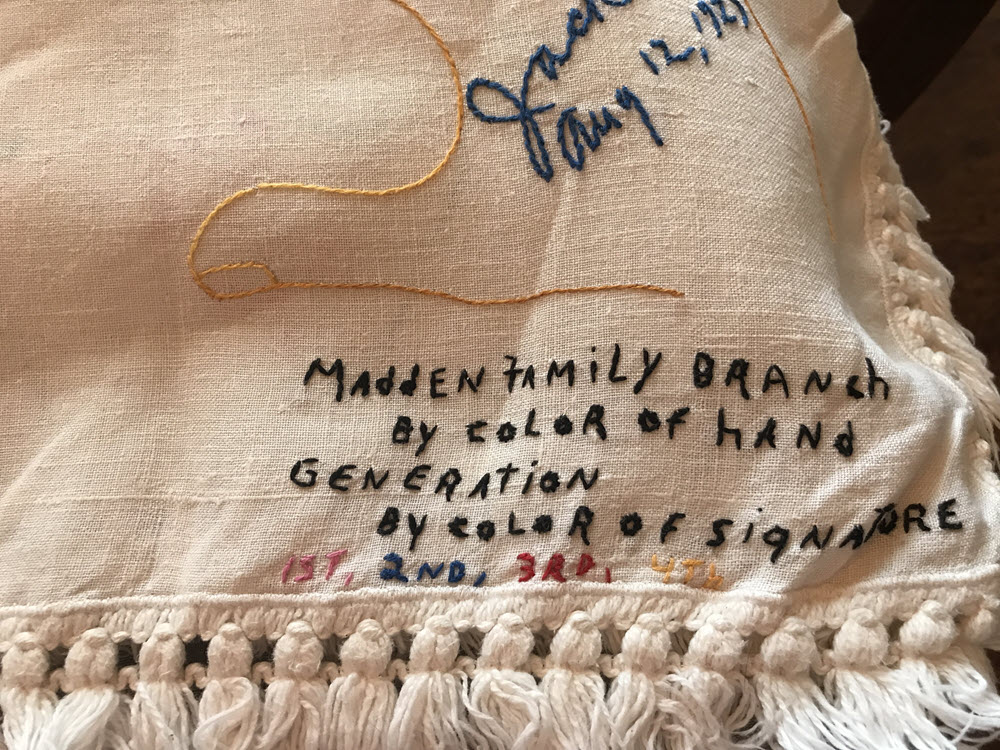
Can you help find the family?
Learn more about how to find family history on ebay. Listen to Genealogy Gems Premium Podcast Episode 16 – Tips for Finding Family History Related Items on eBay
Resources
These show notes feature everything we cover in this episode. Premium Members: download this exclusive ad-free show notes cheat sheet PDF. Not a member yet? Learn more and join the Genealogy Gems and Elevenses with Lisa family here.

Official Elevenses with Lisa Mug News
The manufacturer price is going up August 31, 2021, so now’s the perfect time to get your official Elevenses with Lisa mug.
Elevenses with Lisa Archive
You can also find them through the menu: Premium > Premium Videos > Elevenses with Lisa.
Questions about Finding Show Notes: Watch this Video:
Finding and Downloading Elevenses with Lisa Show Notes
Get My Free Newsletter
Sign up here and get the free PDF bonus download.

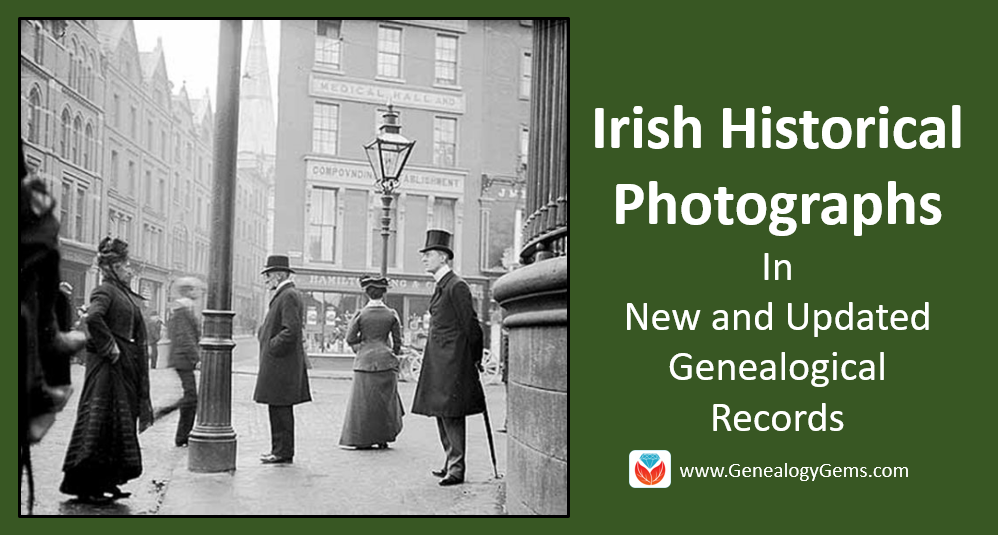
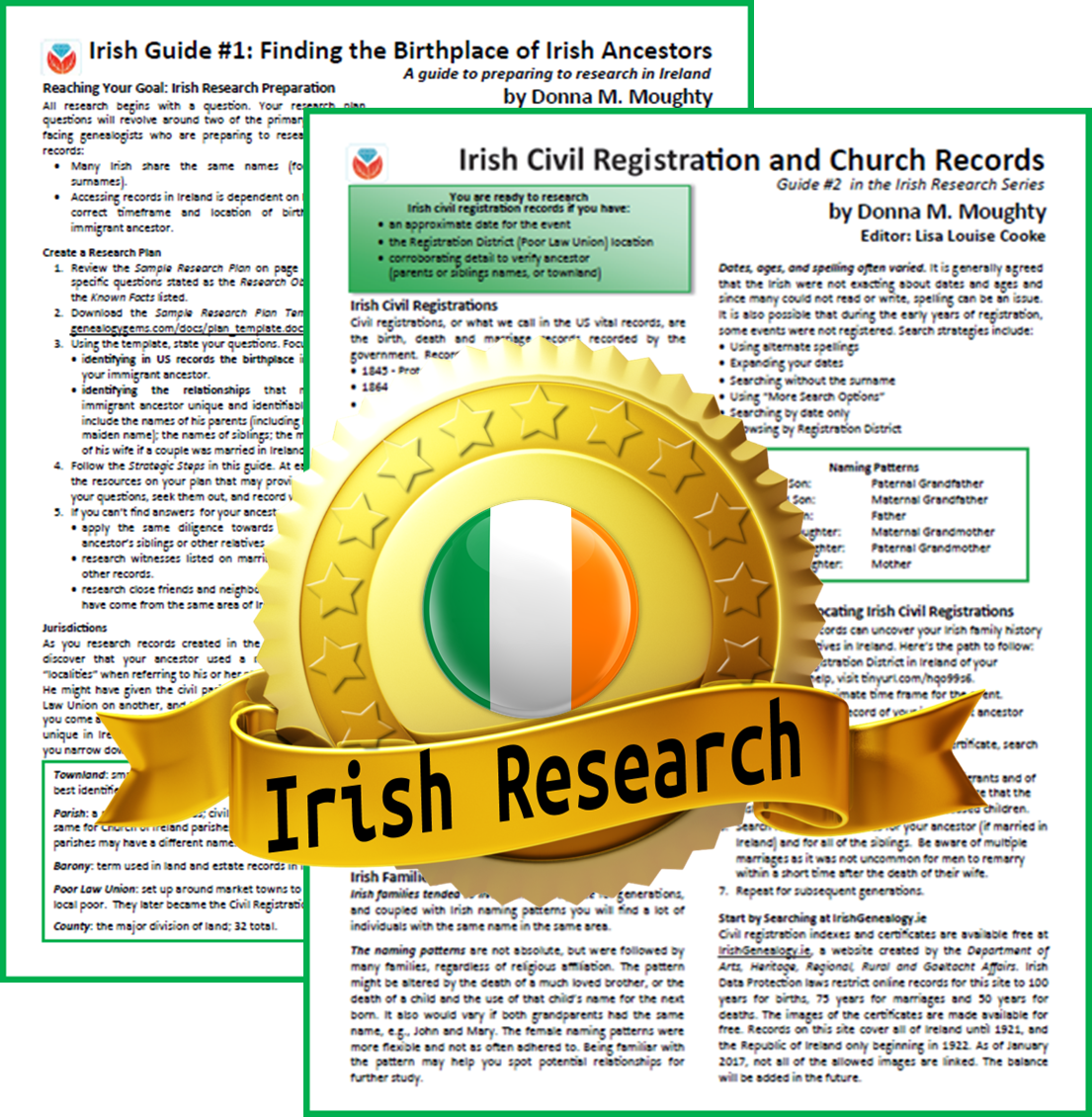

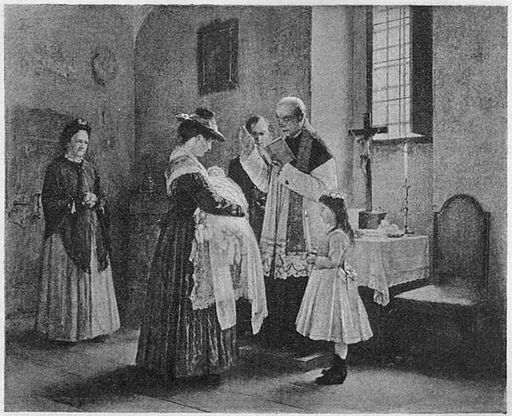
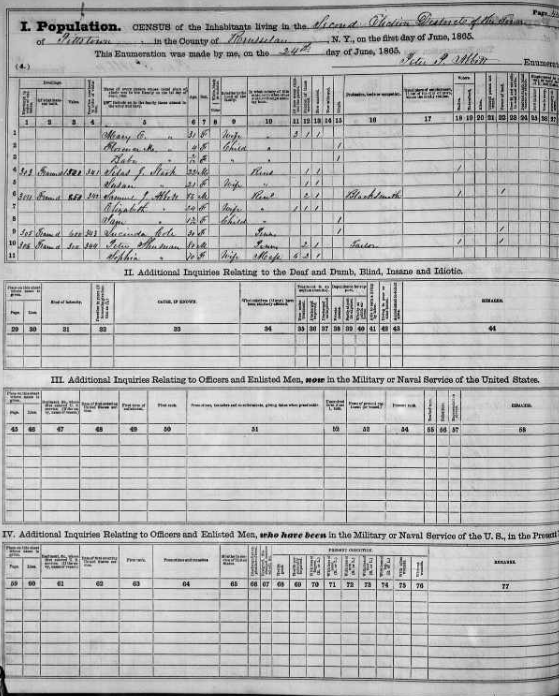 The population schedule includes the name, age, birthplace, and occupation of each household member as most censuses do.
The population schedule includes the name, age, birthplace, and occupation of each household member as most censuses do.